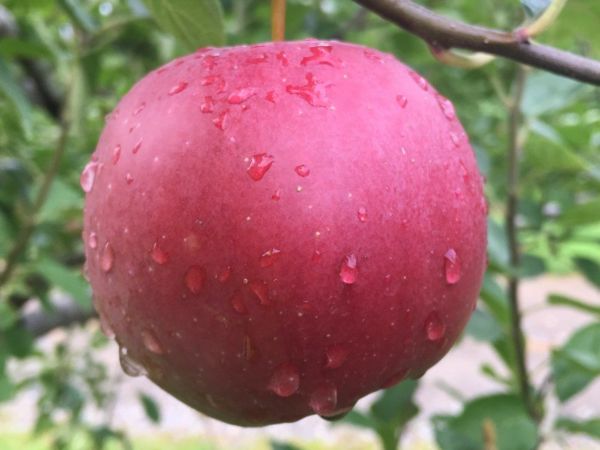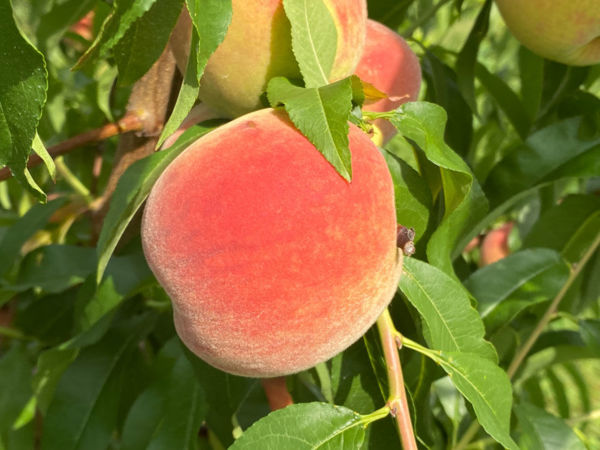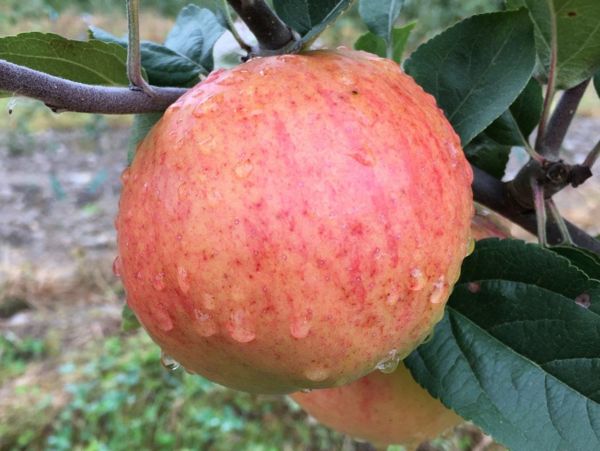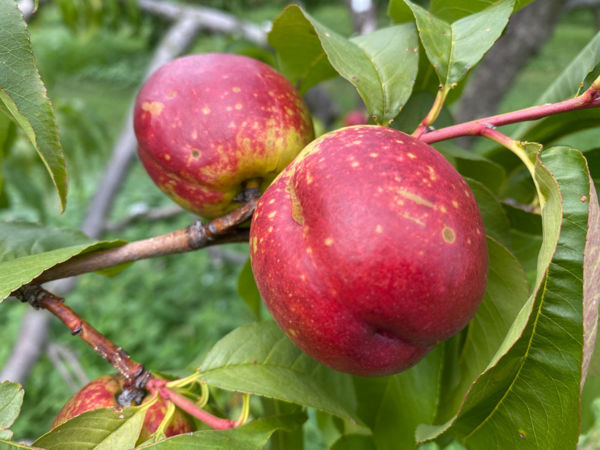An attractive, highly disease-resistant apple, ideal for organic growers.
Bitter Rot
Fruits Affected
Also See
Fruit Tree Diseases and Pests: An IntroductionList of Common Fruit Tree Diseases and Pests
Bitter rot is a fungal infection of ripening fruit, primarily apples, pears, and grapes. It is caused by numerous species of Colletotrichum, and it appears, tragically, late in summer, when fruit is almost ready for harvest.
Symptoms
Circular brown lesions on fruit with rot developing into the fruit.
Organic Treatments
Certain varieties of apple are particularly susceptible to bitter rot: Fuji, Golden Delicious, Empire, and Honeycrisp. As ever with fungal infections, sanitary practices are key. Keeping the growing area clear of rotted fruit and debris will reduce chances of infection, and pruning trees into an open habit allows for good airflow. Chemical control of bitter rot has recently been complicated by discovery of the multiplicity of different strains of Colletotrichum that cause this disease, not all of which are equally responsive to a single fungicide.
Conventional Treatments
Same as organic treatments.
Disease Cycle
Bitter rot is a fungal infection of ripening fruit, primarily apples, pears, and grapes. It is caused by numerous species of Colletotrichum, and it appears, tragically, late in summer, when fruit is almost ready for harvest. The fungus overwinters in numerous wild hosts, dead wood, and mummified fruit in the orchard, and new spores are spread by wind and rain. It is most active in warm, humid weather, and such weather in late August is particularly dangerous. Warmer regions, such as the mid-Atlantic and South are under the most pressure from this disease, but changing weather patterns in recent years have made bitter rot a challenge in northeastern states.
Infection appears on fruit as small, circular, brown lesions. These can expand rapidly, merge, and develop a sunken appearance. Circles of white or orange spores will be visible within the lesions and the underlying flesh will become watery, eventually rotting into a characteristic v-shape in cross section. Infected fruit will eventually dry and drop or mummify on the tree. The most reliable indicator of bitter rot is the v-shaped pattern of decay.
For more information, see the University of Missouri IPM Factsheet on Bitter Rot and the New England Tree Fruit Management Guide on Bitter Rot.
Photo courtesy of Dr. David Rosenberger, Cornell University.
Featured Products
A few things we're loving right now...
A full-flavored, freestone white peach.
A traditional semisharp cider apple from Spain.
A widely-grown, large, yellow-fleshed nectarine.


















